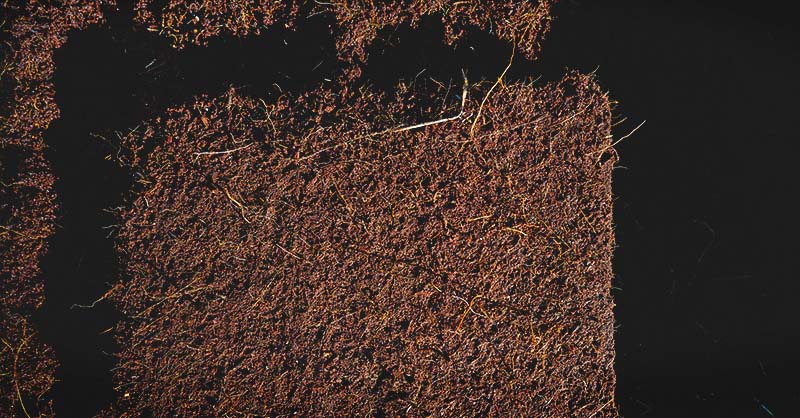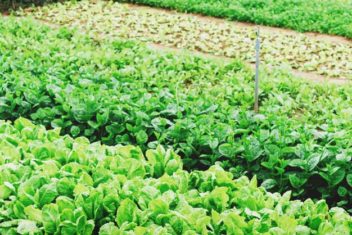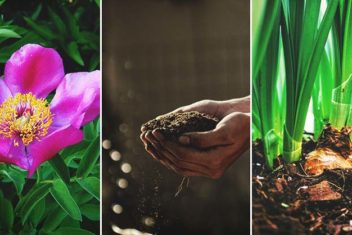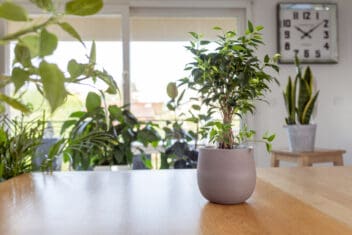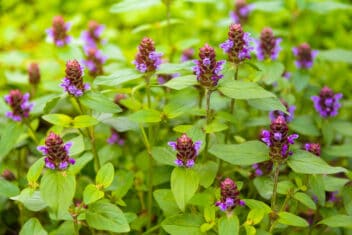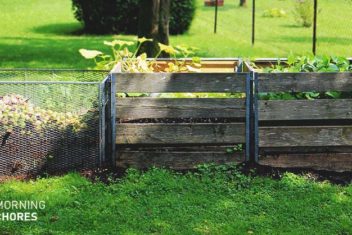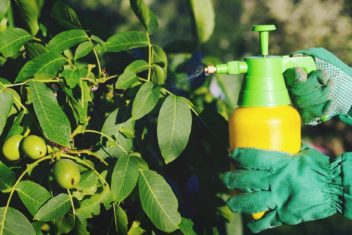Before last year, I had a little experience with coco coir, but it wasn’t a product I was using heavily in my garden. Last summer, though, I completely removed all the weeds and overgrowth in the beds directly in front of my home and purchased a few perennials to plant that I knew were drought tolerant.
When the sweltering summer conditions arrived, I was caught off guard. I had chosen drought-resistant plants for the area because I know too well how scorching the temperatures can get in our otherwise cold region. But as I watched the heat claim a few of my newly planted perennials, I realized I needed to find a way to keep the rest of the bunch alive without having to water several times a day.
I wanted a solution that would help conserve moisture and cool down the ground a little bit when the sun was unforgiving. I decided to mulch with coco coir.
Coco coir is relatively inexpensive and easy to handle, so it seemed like the best option for my situation. I liked it so much that I decided to use it to mulch the rest of the plants in my garden, too. Even with the intense heat last summer, my plants didn’t wilt or dry out. Impressed with the results, I’ve turned to coco coir as my main mulching medium.
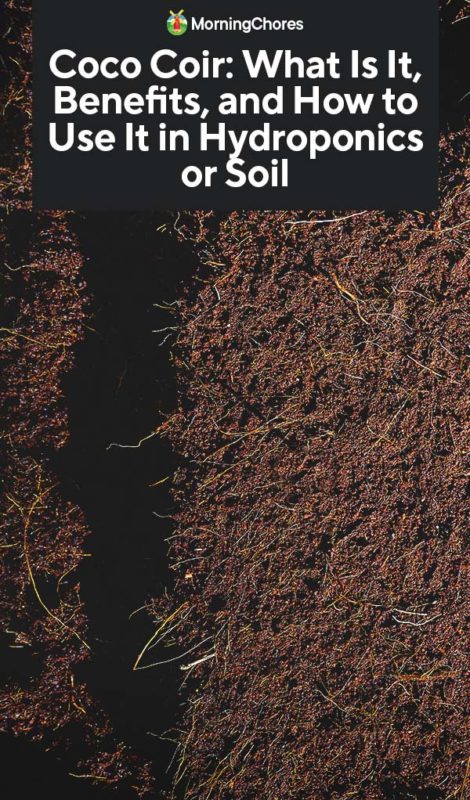
What is Coco Coir?
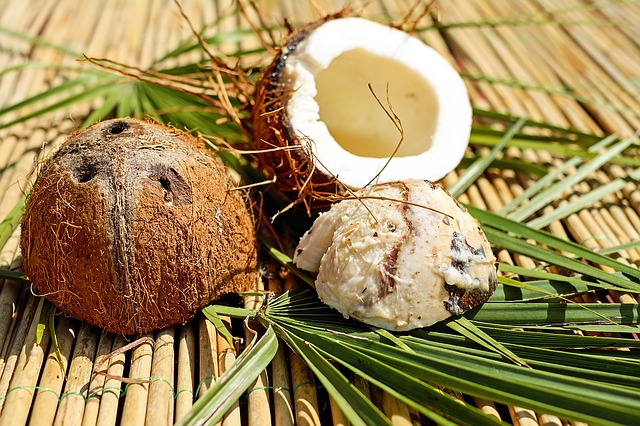
Coco coir is made from the outer husk – the part between the seed and the shell – of coconuts. The husk is processed in one of several ways to produce a growing and mulching medium.
Types of Coco Coir
There are three main ways that coco coir is processed and formed, e
- Fibers – This type of coir is long-lasting and easy to recycle. Coco fibers allow for exceptional aeration, so they’re excellent for promoting root growth. This medium is not as absorbent as other types of coir.
- Pith – Coco pith or peat resembles peat moss. It holds onto the most water out of the three options. It makes a tremendous potting medium but breaks down quicker than peat.
- Chips –Chips are larger chunks of coco coir that promote moisture retention and aeration. I’m a fan of coco chips for mulching my garden plants. The chunkier form is not my favorite option for potting purposes, though.
Benefits of Coco Coir
Wondering what all the fuss is about? Why are people using coco coir instead of other growing mediums? Turns out, there are many reasons this natural product is well-liked by gardeners. I’ve seen some of the benefits up close, and it’s hard to make a case for peat moss, with such a great alternative readily available.
Provides Drainage
Coir is known for its water retention properties, but it also allows for proper drainage and prevents water logging of plant roots, reducing the chance for root rot. This makes coir a good choice not only for use as potting soil but also for seed starting purposes.
Hard to Overwater
Because coir drains so well, it’s tough to overwater plants that are housed within this medium. Overwatering is a common mistake made by plant lovers and gardeners, but with a quality product like coir, it’s tougher to drown roots and suffocate plants.
Aerates Soil
Coco coir is fluffy like peat moss, so it provides exceptional aeration for plant roots. It does break down at a faster rate, but overall, the lightweight fibers provide enough air pockets for roots to breathe.
Promotes Root Growth
Nutrient dense and moisture friendly, coco coir promotes a healthy environment for plant roots to thrive. Roots require room to grow, air, water, and nutrients to grow and expand properly.
Eco-Friendly
Coco coir is a better alternative to peat moss thanks to the fact that it’s renewable. Sourced from coconuts grown on trees, it’s possible to re-plant and continually harvest this resource. Coconut trees, after all, produce many coconuts in a single year. Recent technological advances have also made it easier to transform and manufacture coco coir making it readily available and cost-effective.
Peat, on the other hand, comes from bogs. These bogs are a critical natural habitat for many species. Not only does peat take an incredibly long time to form, making it a non-renewable resource, but its harvest also represents a threat to nearby species and ecosystems.
Neutral pH
Unlike peat moss, which has a slightly acidic pH, coir is neutral. Using coir as potting soil or mulching your plants with it won’t have a significant impact on your soil’s pH.
Contains Useful Micronutrients
Coir isn’t merely an inert growing medium. It contains helpful micronutrients such as magnesium and calcium, which can directly benefit plants.
Doesn’t Compact
Some growing mediums compact too easily. Compacting is not ideal for plants and can hinder root growth. It’s the reason you shouldn’t walk on your garden soil. Pressing down and compacting the soil limits the formation of air pockets and can leave the earth hard and clumpy, when what most plants really want is a well-aerated medium that’s light and fluffy.
Inexpensive
Coco coir is a relatively inexpensive growing medium and has a comparable price tag to peat moss.
Easy to Transport
Coco coir is often sold in compacted blocks, and these blocks are lightweight and easy to transport. The weight of this medium makes it easy to take home from your local nursery without worrying about hurting your vehicle’s suspension. It also means that it’s relatively easy to purchase online and you won’t be overwhelmed by shipping costs. You can also store coir bricks if you have limited space.
Handles Better than Peat
Have you ever tried to use peat moss in the garden? It’s incredibly dry out of the bag, which makes it tough to re-hydrate. Although peat does retain moisture, re-hydrating it takes some patience. Coco coir, on the other hand, absorbs moisture readily and takes a lot less time to re-hydrate.
Sanitary
Like peat, coco coir is pest and disease-free, so you don’t have to worry about weeds or diseases when using the medium for starting seedlings or mulching plants.
Can be Recycled
Recall that we mentioned that coir is eco-friendly because it’s a renewable resource? Not only because it grow on trees, though. You can also re-use this medium. Did you use coir to grow seedlings this spring? Don’t throw it out! Use it right away to mulch your transplants.
Drawbacks of Coir
No growing medium is perfect. Whether it’s an environmental concern or an issue of convenience, a variety of mediums such as coco coir have certain drawbacks that are worth mentioning. I’d argue that coir far outpaces peat moss when it comes to its overall benefits.
First off, some coir products may contain harmful chemicals because of the treatment process to make it. Carefully reading labels on products will help you understand how coir has been treated and will help you avoid heavily processed coir. Organic gardeners should look for OMRI lists coir products for their garden.
Finally, another concern that’s worth noting is that using coco coir may affect the nutrient uptake and availability for your plants because coir fibers tend to attract certain nutrients. Gardeners, however, can find special coir-specific fertilizers and amendments for use with this growing medium.
Ways to Use It
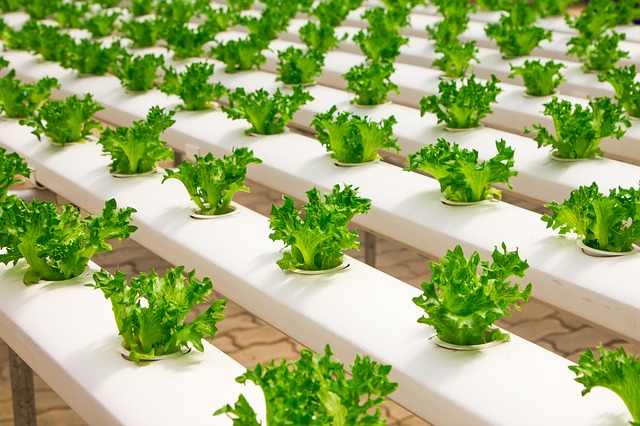
What are some popular ways to use this growing medium? Here are a few:
- Hydroponic growing – the hygienic, pest and disease-free nature of this medium make it ideal for this type of growing
- Potting soil medium – coco coir works well as an indoor plant potting medium thanks to its ability to retain moisture. You’ll kill fewer plants because you likely won’t need to water as frequently.
- Mulch – Add to outdoor beds as a mulch to help conserve moisture.
- Seed starting – Coir is a sanitary choice for starting seedlings that promotes healthy root growth.
How to Use Coco Coir
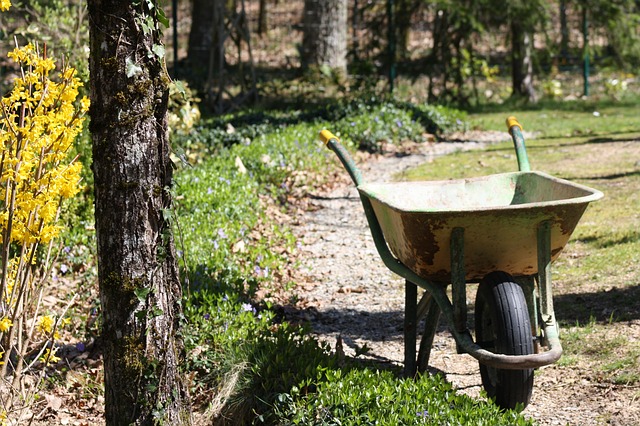
Okay. So you’ve purchased a few coco coir bricks online, and they’ve arrived at your doorstep. You’ll need to rehydrate the medium to turn the compact, lightweight block into a fluffy substrate. I suggest using a large bucket or wheelbarrow to re-hydrate coir. You’ll have enough space to add water, and once the stuff is sufficiently fluffed, it’ll be easy to transport to whenever you need it in your garden.
While coir re-hydrates faster than peat, you’ll still need a bit of patience. Use warm water and slowly pour it over your brick. Add a little bit of water at a time. You don’t want to over-hydrate the coco coir. It may take some time for the brick to soften up and the fibers to expand.
If you’re not using the re-hydrated coir right away, store it away in a sealable container for later.
Where to Buy It
Wondering where to find coco coir to use in your garden? You may be able to buy it at your local nursery, but it’s also easy to find online.
Do you use coco coir in your garden? How do you use this growing medium? Have you had much success with it and has it replaced your use of peat moss? Let us know in the comments section below!

